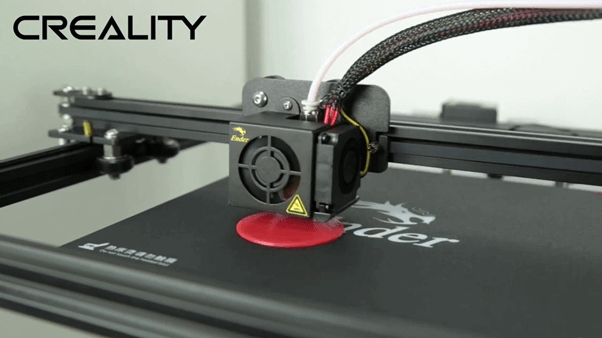The world of 3D printing is rather an exciting place full of DIYers, creators, craftsmen, engineers, entrepreneurs, and forward thinkers. It is a community of millions that share a passion for 3D printing. They love their 3D machines, and they can’t stop talking about them.
In this article, we are going to talk about two 3D printers. This is not just another 3D Printer Comparison, but it will be about two 3D printers from the same manufacturer – Creality’s Ender 3 and Ender 5.
Ender 3 vs. Ender 5
Assembly
Ender 5 is much easier to assemble as there are only 20 screws. Furthermore, the instruction manual is impressively comprehensible. Each step of the assembly process is easy to follow, even if you are assembling your first 3D printer. The assembly time for experienced people is around twenty minutes. If this is new for you, then you might need 30 to 45 minutes tops.
On the other hand, assembling the Ender 3 can take you two or three hours. That’s quite a difference as the Ender 3 has way more screws and assembly parts.
The winner is clearly Ender 5.
Build volume
The Ender 5 build volume adds 50 mm in the Y dimension, and other dimensions are equal. This is one of the most notable differences between the two models.
Winner – Ender 5

Heated bed and hot end
Ender 5 comes with an MK10 hot end, which minimizes filament jams and clogging, whereas Ender 3 comes with the standard MK8 hot end.
Both Ender 3 and Ender 5 share the same heated bed. However, the magnetic PEI sheet of Ender 5 does not stump into the power supply, which is an issue with Ender 3. The stock Ender 3 still suffers from this problem, but it can be easily fixed by adding a PEI sheet.
Then there are the Uxcell bedsprings on the Ender 5, which don’t need too much leveling, at least as not as much as with the Ender 3 bed springs. Plus, the Uxcell bedsprings are way better in holding tension.
Winner – Ender 5
Electronics
Ender 3 comes with a certified Meanwell power supply, while the Ender 5 has a generic one which presents a greater risk of fire or an electric shock.
The Ender 3 features a v1.1.4 mainboard, while the Ender 5 still uses the obsolete v1.1.3 mainboard. The thing with the v1.1.3 mainboard is that it doesn’t include thermal runaway protection.
Winner – Ender 3 (because of the mainboard)
In conclusion
Ender 3 has been a hit and is regarded as one of the most popular entry-level 3D printers in the world. People will keep on buying it, and its deserved glory won’t go away any time soon. Furthermore, Ender 3 has a massive community spread worldwide, which provides excellent support to anyone that buys and uses this excellent 3D printer.
But now we also have the Ender 5 which is a clear step forward from the Ender 3, as it should be. Pretty much all the issues of the Ender 3 have been addressed and fixed with the Ender 5.
So yes, the Ender 5 is a bit more expensive than the Ender 3, but that’s the price for all those improvements and bigger build volume.
